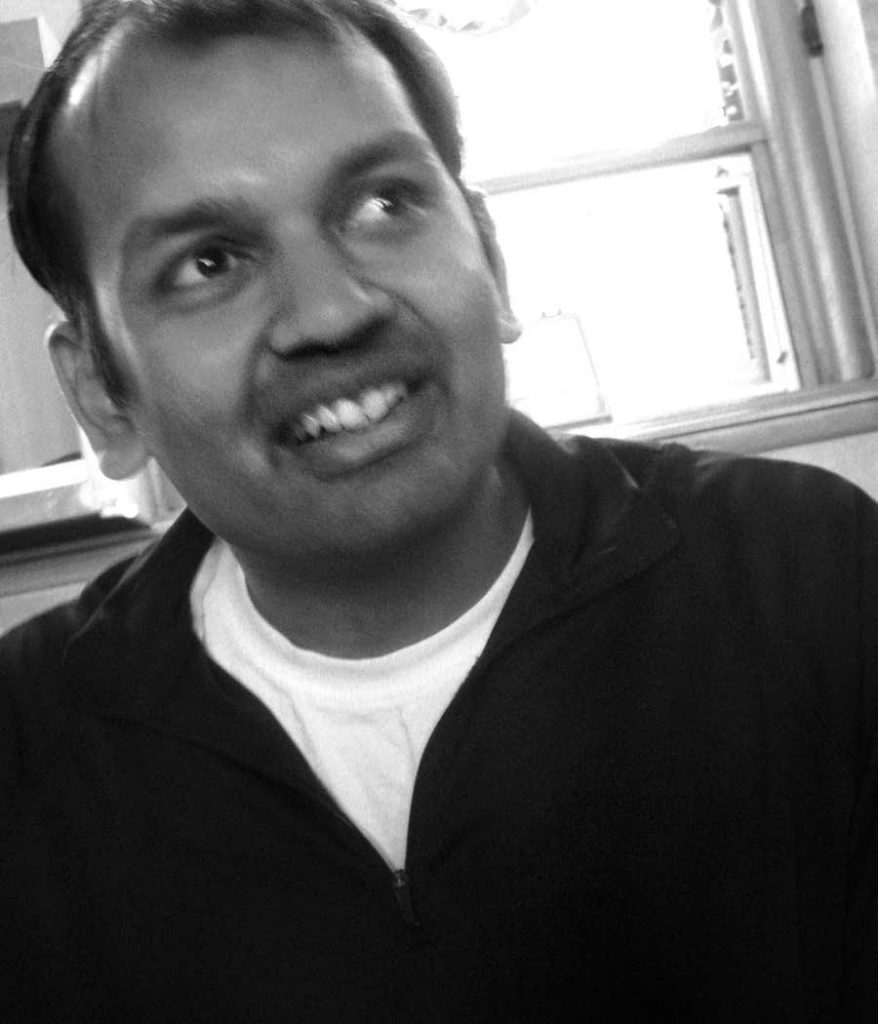
Photographs by Richard Whittaker
Nipun Mehta was born in Ahmedabad, India, in 1975. When he was twelve, his family moved to Santa Clara, California, in the heart of Silicon Valley.
I met Nipun in 2007. Having heard several amazing stories about him from Paul Van Slambrouck, retired editor of the Christian Science Monitor, I asked for an introduction. The three of us met one afternoon at a taqueria in Berkeley. In no time I felt a close connection with this very personable man. I was completely unprepared, however, when after about twenty minutes of animated conversation, he leaned across the table and asked, “How can I serve you, Richard?”
Ten years ago, Nipun, who was then working at Sun Microsystems, and three friends decided to offer an act of pure giving as an experiment. They ended up building a website for a homeless shelter. Since then, not only have over 4,500 web sites been built for nonprofit organizations at no charge, but a loose knit organization has taken shape—CharityFocus.org— that has given rise to several new organizations: HelpOthers.org, DailyGood.org, KarmaTube.org, iJourney, Karma Clinic, Service-eXchange, Karma Kitchen, ProPoor.org, and a few others. Several thousand CharityFocus volunteers now stretch across the globe and the organization continues to evolve while operating on a budget of less than $100 a month.
At the time of this interview, Nipun had just returned from England, where he spoke at the London Business School. We met at the Berkeley Buddhist Monastery, which is not far from the simple apartment where Nipun lives with his wife, Guri, one of the original group who volunteered at the homeless shelter. At Nipun’s suggestion, before speaking we meditated for a half hour in the beautiful still space as sunlight streamed
through the windows.
Sitting there quietly, I realized how grateful I felt to have met Nipun, not only because of his own remarkable spirit, but because through him I’ve seen there are countless young people with a deep wish, in Gandhi’s words, to be the change they wish to see.
—Richard Whittaker
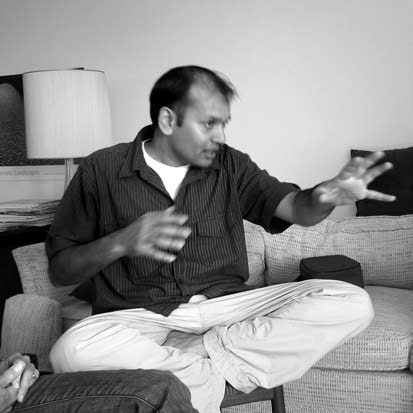 PARABOLA: Growing up in India and in the city of Gandhi’s ashram, did you absorb the Gandhi story?
PARABOLA: Growing up in India and in the city of Gandhi’s ashram, did you absorb the Gandhi story?
NIPUN MEHTA: Not the Gandhi story as such, but the culture of giving. Acts of kindness are almost a part of everyday life there. For example, when it was my birthday, I would take chocolates to school and give them to my classmates. On occasions of goodness, occasions of happiness, you give to other people. You do get some gifts too, but it starts with giving.
P: You graduated from UC Berkeley with a dual degree: philosophy and computer science. The university classes in philosophy were ultimately disappointing in some way?
NM: I was not interested in reading a book about swimming. I wanted to go into the ocean and feel the water and all the subtle nuances of what it meant to have the real experience.
P: Do people say sometimes that talking about service and not being attached to money is easy for you since you come from a place of privilege, that it would be different if you were struggling?
NM: All the time.
P: What do you say to that?
NM: The IRS would classify me as “poor” so it’s one thing to have material advantages, but real privilege is in knowing that you have enough. It’s a privilege, but not really—because anyone can have that.
There’s this myth that you need to have things before you can give. I always say that service doesn’t start when you have something to give; it blossoms naturally when you have nothing left to take. There’s a subtle difference. It’s about renouncing your desire, your want. As soon as you let that go, then whatever you do is an act of service.
P: Sometime after you’d been working at Sun Microsystems and saw that making money was not going to be a problem, you looked at your own future and asked what was really worth doing?
NM: The realization, early on, was not pro- or anti-money. It was more that I didn’t want money to be my master. The stuff that money can buy—I didn’t want that to be a guiding principle in my life. So if you don’t go that consuming route, that gathering and accumulation route, what other options do you have? To let go and to give, to renounce in some sense. Could that lead to happiness? I didn’t know. So I just decided to experiment and find out.
P: Fear gets in the way of letting go. What’s the antidote?
NM: There are two ways I address that. One is by understanding the nature of clinging. And I do that through meditation. The second is to actually flip your habit pattern. I do that by giving, by service, by small acts. Any time you’re still, you can see reality as it is. That gives you insight. Any time you practice the smallest act of service, even if it’s only holding a door for somebody, but with full heart— may I be of use to this person— that giving changes the deep habit of my mind from everything being mecentered. In that brief moment, there is this other-centeredness. That other-centeredness kind of relaxes the patterns of the ego. Over time, all of those small acts, those small moments, lead to a different state of being where, ultimately, presumably, it just becomes effortless. It becomes who you are. So for me, the two pillars of my life are meditation and service.
P: You and your friends formed CharityFocus in 1999?
NM: CharityFocus formed itself. CharityFocus emerged in this continuum of giving money, then time and then giving myself.
P: Then at some point you began canvassing your colleagues at Sun Microsystems to see if they wanted to join you.
NM: I had an attraction to frictionless service in a way. So I never quite said everybody should go out and do it. I think that’s how it was perceived in the media: Here’s this young kid who started this organization trying to change Silicon Valley. But I was really just trying to change myself.
Then sometimes you benefit so much from some small act that you have to go and share it with the people around you. Your cup of gratitude just overflows! It’s like, “Richard, you’ve really got to try this!”
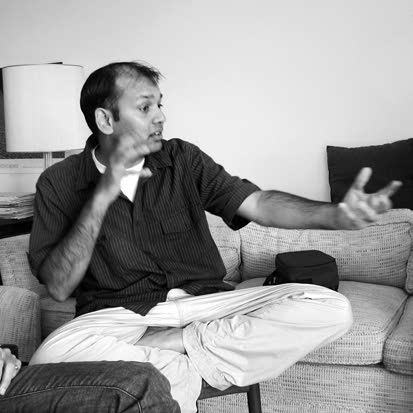 P: You don’t speak much about your own computer knowledge. Neil Patel [a CharityFocus tech volunteer] said something to the effect that you had created a software program that, later on, was similar to what Facebook came up with.
P: You don’t speak much about your own computer knowledge. Neil Patel [a CharityFocus tech volunteer] said something to the effect that you had created a software program that, later on, was similar to what Facebook came up with.
NM: I’m capable of doing that.
P: Did you write any code this morning?
NM: I did! It’s like this hidden thing. I just tell people I do small acts of kindness, but then there’s the plumbing you have to do behind the scenes.
P: CharityFocus seems to be a new form of an organization.
NM: I think one of the biggest meta-level things that has happened in the last few years is that we’ve started to organize without organizations. You’re seeing forms of organizing with no centralized office, without a centralized boss or leader. That is amazing! That means that if you and I care to do something of value—for example, Daily Good. A few of us said, there’s not enough good news in the world. So let’s send out a little
good news every day. We’ll do the research, find these things in the corners of the world and send out one piece of good news every day.
That now is going out to over one hundred thousand people every day.
There’s no overhead. We’ve never solicited anything. Just like Wikipedia. In the last year there have been over one-hundred million hours volunteered online— just on Wikipedia. We have all these small areas of surplus that have never been tapped into. And we’re learning how to tap into and organize all of this and aggregate these small pieces without any significant overhead because of the Internet.
Still, that’s not enough. What you need to do is to envelope all of these in a constructive set of values that benefits all. That is something that is always going to be an issue no matter what.
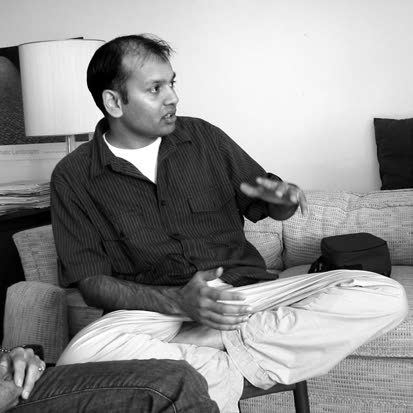 P: Let’s talk about the gift economy. Tell the story of smile cards.
P: Let’s talk about the gift economy. Tell the story of smile cards.
NM: None of the CharityFocus projects are ever planned. They emerge. A few of us were sitting around a coffee table in Chicago talking about pranks—my cousin and I and a few other people. We started asking why do people do pranks? We came up with a bunch of incentives: it’s challenging, it’s creative, it’s collaborative. We went through a whole list of motivations for what, at the end of the day, is essentially destructive.
So we said, how about we reframe this? We leave all these motivations in, but we make pranks constructive. What if you just blew somebody away with kindness? You know someone is going through a rough period, just everybody send flowers, send cookies, send thank-you cards, send chocolates. Just flood them with goodness! And they wouldn’t even know who did it.
My cousin started to get really excited. Someone said, you know what would be great? Whenever we do one of these small acts, instead of them wondering who this was and being spooked out by it, what if we left a little card that said, “This is an experiment in anonymous kindness. You’ve been tagged. You don’t know who did this so you can’t pay back. But you can pay forward.” So we decided to do this.
P: And when you went to Kinko’s to print up the first batch of smile cards….
NM: The guy asks, “What is this?” When I explained it, he was so blown away he said, “I’ve got employee discounts and I’m not going to charge you for this.” So this guy did the first smile-card act before we could even start!
The reason everybody said it was crazy was because we said, we’re going to give away the cards for free. Anybody can download the cards and print them locally or they can request them online and we’ll ship them at no cost. How would we cover the costs? We don’t solicit anything, as one of the three CharityFocus principle mandates. But we didn’t care. We’re just going to ship them as a pure gift, from an anonymous address, from a site that itself was anonymous. People really thought the whole thing was crazy—naïve and unsustainable.
What actually happened was that people would receive these and a certain percentage of them would wonder, “Who took the trouble to get an envelope, print these cards, stuff them in, send them to me from an anonymous address, from an anonymous web site, just for the love of it, just to spread goodness in the world?” And they felt, “Wow, my cup of gratitude is overflowing! I’m moved and I need to offer something.” And we started getting these donations. We didn’t really expect them to come in. We never really have a plan. We said, “Look, it’s a good thing to do, so let’s do it and we’ll deal with future when we get there.”
Ultimately, we found that if you trust people and you truly deliver value and you don’t ask for anything in return, there will be those who will gift your sustenance. So today, there are a million smile cards in the world.
P: Literally.
NM: Literally. There are actually more than a million smile cards floating around in the world because tons more have been downloaded and printed and we don’t even know about those.
P: Each Smile Card that’s used is a marker for an act of kindness. If it’s in someone’s pocket, it may not have been used yet, but it’s already probably changed a person’s state a little. They’re kind of looking for a way to use it.
NM: Exactly! Even if they never actually use it, that shift in the lens of a person is powerful.
P: So when you do a random act of kindness, that’s a gift. How do you describe this idea of a gift economy?
NM: We were asked by a dictionary recently to define “gift economy.” I think it was the Dictionary of Ethics and Values. Their whole thing is that if we want to shift to a new paradigm, we need a new vocabulary.
Gift economy, in the sense we use it, is this idea that you give freely, without any strings attached. The person who receives it carries this gift forward. And over time, as enough people carry this forward, this sort of sacred reciprocity takes care of everyone’s needs. So what goes around eventually comes back around to me. It’s not that I give to this person and he’s going to do something back for me. There is just this trust. You give and make somebody’s day and they go out and do the same for somebody else and in your time of need, somebody will come and do this for you.
P: The idea of the gift economy being for everybody’s benefit is that goods are circulating freely. They’re not being hoarded and taken out of circulation.
NM: The gift economy says that it is in the circulation of gifts that value is generated. Not in accumulating it in your bank locker. If you have something of value, put it in motion. That will create more ripples. Karma Kitchen is really an easy example. You go to this restaurant and your check at the end of the meal says zero. It says, your meal was paid for by somebody who came before you and it’s a gift. If you’d like to pay it forward, leave something in the envelope to pay it forward for somebody after you. And it works. We’ve been running it for quite some time in various cities.
I don’t know if you’ve heard about this, but in Indonesia where there is a lot of corruption, they started these “honesty cafes”—essentially gift economy cafes. They have 7,400 honesty cafes across Indonesia. They want young people to come in and figure out how much they pay. They say, “We want to trust them. We want them to figure out the whole value proposition.” And as they do this, it will in turn create a culture that is rooted in values. It’s turning out to be an antidote to corruption in Indonesia.
P: Do you have any sense of the size of the population that’s moved by these values? Or any sense of the readiness in the world to embrace this kind of service?
NM: I think everybody understands gift economy. They may not call it that, but I think everybody gets it. We start with a gift, nine months of complete nurturing. Every single person is gifted their life by their mother. So we get it. We see it in nature.
In times when we’re blind to all the gifts coming our way, we need to make this explicit. That’s how I think these conditions are coming together and why we have “gifteconomy” and other phrases coming into prominence. And we have tools like the Internet and platforms that allow you to manifest very long-tail, niche ideas.
P: Not everybody who reads that term “long-tail” will know what that means.
NM: Niche ideas. A long-tail idea is one that doesn’t have a lot of dominant paradigm acceptance.
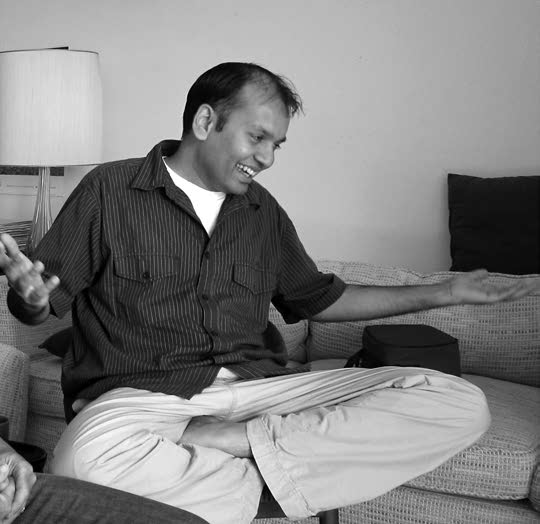 P: Social capital. Can you describe what that is?
P: Social capital. Can you describe what that is?
NM: It’s really relationships. When you run out of milk and go to your neighbor’s house to ask for some, that’s social capital. When your friend dog sits for you or picks you up from the airport, that’s social capital.
P: Social capital is a reservoir of the good will of others, something like that?
NM: That’s a nice way to put it. When you selflessly give to somebody it creates a deep relationship, and that reservoir of connections is what I think of as social capital.
So, what can we do with social capital? We’ve never had a platform that allowed us to do anything that could be measured with social capital. But what is Facebook? It’s all social capital. And it’s worth over ten billion dollars. Now everyone is talking about this networked economy and what social capital can lead to.
P: Isn’t there always the relentless movement to convert such things to the monetary gain?
NM: Every tool that you have can be used in all kinds of ways. The dominant paradigm is, “I want to create something of value so I can sell more advertising.”
P: So how does one counter this?
NM: By good people coming together and standing up and saying, “I want to be the change.” I’m going to support you just because you’re a fellow human being and someone else comes and supports me in the same way. The gift-economy starts with you and me.
P: Well, I know you. You know me. I learn that you’re for real, directly. But when this person-to-person connection is abstracted, how is trust developed? You don’t want to trust something that isn’t trustworthy.
NM: What we can do, on a personal level, is these small acts of trust that ultimately will create the field for deeper change. At a systemic level, we have to bring all these small pieces together, which the Internet is really capable of doing. On a societal level, what we need to do is birth what I call “generosity entrepreneurs.” Those are people who have an entrepreneurial mindset of creating something new, but they are doing it in the spirit of the gift economy.
The way I look at it, there are only three kinds of capital—Intellectual quotient, IQ, which we know plenty of; then there’s EQ, emotional quotient, which science has been getting to know in recent years; but there’s a third quotient, which is compassion quotient, CQ. That’s nowhere in sight.
We have think tanks why not “love tanks”? We just don’t know how to capitalize on that compassion quotient and we ought to learn. This is what I see “generosity entrepreneurs” doing.
P: Have you talked with anyone about this?
NM: I have talked with some friends about this. I do think we need a laboratory of compassion. When the time is right, it will germinate. The way I go about things is not to say, “Here is a proposal. Here’s how you do it.” I have an implicit faith in the self-organizing ways of the universe, that whenever it is time for this kind of a love-tank to be birthed, for a cadre of generosity entrepreneurs to bring out this gift economy in its full majesty, then something will happen. ♦
From Parabola Volume 34, No. 4, “The Future,” Winter 2009. This issue is available to purchase here. If you have enjoyed this piece, consider subscribing.
